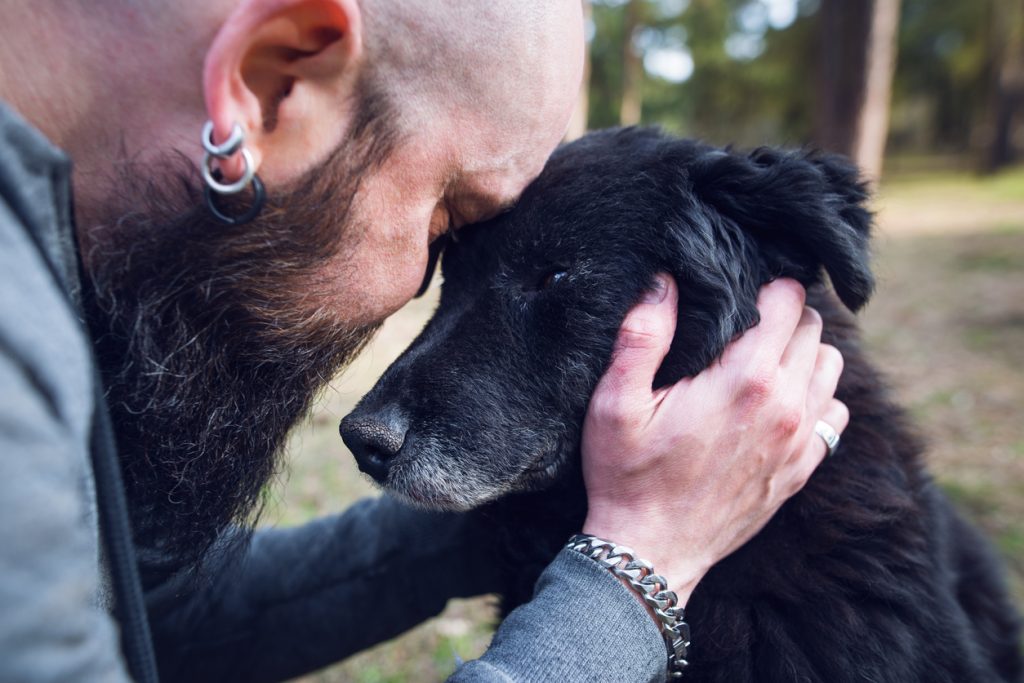Euthanize a dog with Cushing’s disease when their quality of life significantly deteriorates. This decision may be based on increased pain, medication resistance, or severe symptoms.
Cushing’s disease in dogs, also known as hyperadrenocorticism, occurs when the adrenal glands produce too much cortisol. As the disease progresses, it can lead to various symptoms such as excessive thirst, increased urination, hair loss, and muscle weakness. Determining when to euthanize a dog diagnosed with Cushing’s disease can be a difficult decision for pet owners.
Understanding the disease’s implications and the potential impact on the dog’s well-being is crucial in making such a decision. We will explore the factors to consider when evaluating the option of euthanasia for a dog suffering from Cushing’s disease, providing insights for pet owners faced with this challenging decision.
Symptoms And Diagnosis
Identifying common signs of Cushing’s Disease is crucial for pet owners. Symptoms such as increased thirst, urination, and appetite, as well as hair loss and muscle weakness, may indicate the need for veterinary intervention. Early diagnosis is essential, as timely intervention can improve the quality of life for dogs with Cushing’s Disease. Diagnostic tests, including blood work, urinalysis, and cortisol level assessments, aid in confirming the condition. Understanding these key indicators enables pet owners to take prompt action and provide the necessary support for their furry companions.

Credit: cloud9vets.co.uk
Treatment Options Available
When dealing with a dog diagnosed with Cushing’s disease, it is essential to consider the available treatment options. Conventional medical treatments, such as medication, are often the primary approach. These options aim to manage the symptoms and improve the dog’s quality of life. In some cases, surgery may be considered as a potential solution, particularly if the dog has an adrenal tumor that is causing the disease.
Moreover, integrating holistic management can also be beneficial. This may involve using natural remedies and dietary changes to support the dog’s overall well-being. Before making any decisions, it is crucial to consult with a veterinarian to evaluate the best course of action for the dog’s individual needs.
Assessing Quality Of Life
Assessing Quality of Life
When considering the decision to euthanize a dog with Cushing’s disease, it is crucial to monitor the physical and emotional indicators of the dog. Observe for signs of pain, difficulty in breathing, mobility issues, and changes in appetite and behavior. Utilizing quality of life scales can also aid in assessing the overall well-being of the dog. Moreover, seeking veterinary advice is imperative in making an informed decision. Veterinarians can provide insights into the dog’s condition and offer guidance on the best course of action. By carefully evaluating these factors, pet owners can make the most compassionate decision for their beloved furry companions.
When To Euthanize A Dog With Cushing’s Disease: Compassionate Guidance
Deciding when to euthanize a dog with Cushing’s Disease is a difficult and emotional decision that requires careful consideration. Recognizing the right time involves assessing the dog’s quality of life, including factors such as pain levels, mobility, and enjoyment of activities. Consulting with a veterinarian to understand the dog’s prognosis, potential treatment options, and expected disease progression is crucial. Additionally, it’s important to take into account the impact on the dog’s daily routine, such as eating, drinking, and bathroom habits.
Factors to consider before deciding include the overall well-being of the dog, the emotional and financial strain on the owner, and the ability to provide proper care. Preparing for saying goodbye involves arranging for a peaceful and comfortable environment, discussing the decision with family members, and seeking support from friends or support groups. Ultimately, the decision to euthanize a dog with Cushing’s Disease should prioritize the dog’s quality of life and ensure a compassionate and dignified farewell.
Before The Procedure
Consulting with your vet: It’s important to discuss your dog’s condition with your vet to understand the options available and the best course of action. Your vet can provide valuable insight and advice based on your dog’s specific situation.
Understanding the euthanasia method: Before proceeding with the procedure, it’s crucial to have a clear understanding of the euthanasia method. Knowing what to expect can help ease any anxieties and ensure that the process is as smooth as possible.
Supporting your family and pet: Euthanizing a pet with Cushing’s disease can be an emotional and difficult decision. It’s important to provide support for your family members and create a comfortable and peaceful environment for your pet during this challenging time.
During And After Euthanasia
What to expect during the procedure: During the euthanasia procedure, you can expect a peaceful and painless process for your beloved pet. The veterinarian will ensure that your dog is calm and comfortable, and the entire procedure is usually quick and gentle.
Coping with grief and loss: After euthanizing a dog with Cushing’s disease, it’s important to give yourself time to grieve and come to terms with the loss. Seek support from friends, family, or even a professional counselor if needed. Remember to take care of yourself during this difficult time.
Memorializing your beloved pet: To honor the memory of your beloved pet, consider creating a memorial in their honor. This could be a special plaque, a dedicated spot in your garden, or even a donation to a charity or rescue organization in your dog’s name.
Frequently Asked Questions For When To Euthanize A Dog With Cushing’s Disease
When Is It Time To Consider Euthanizing A Dog With Cushing’s Disease?
It’s a tough decision, but consider euthanasia if your dog’s quality of life has significantly declined despite medical treatment and care. Look for signs of pain, discomfort, and inability to enjoy everyday activities to make an informed decision with your veterinarian.
What Are The Signs That A Dog With Cushing’s Disease May Need To Be Euthanized?
Signs include uncontrollable urinary accidents, severe muscle wasting, ongoing lethargy, refusal to eat, and a decline in cognitive function. When these symptoms persist and impact your dog’s well-being, it might be time to discuss euthanasia with your vet.
How Can A Veterinarian Help Guide Decisions About Euthanasia For A Dog With Cushing’s Disease?
Your veterinarian can assess your dog’s overall health and quality of life and provide guidance on pain management and treatment options. They can help you understand the progression of Cushing’s disease and support you in making a compassionate decision when the time comes.
Conclusion
In the end, deciding when to euthanize a dog with Cushing’s disease is a deeply personal and emotional decision. It’s important to consider the dog’s quality of life and consult with a veterinarian for guidance. Remember to prioritize the well-being of your furry friend and seek support during this difficult time.



